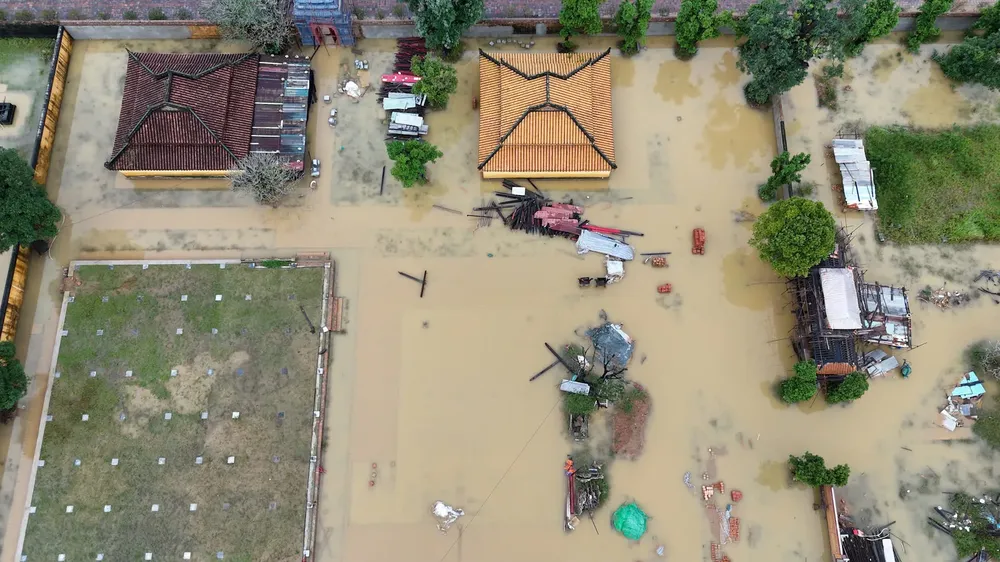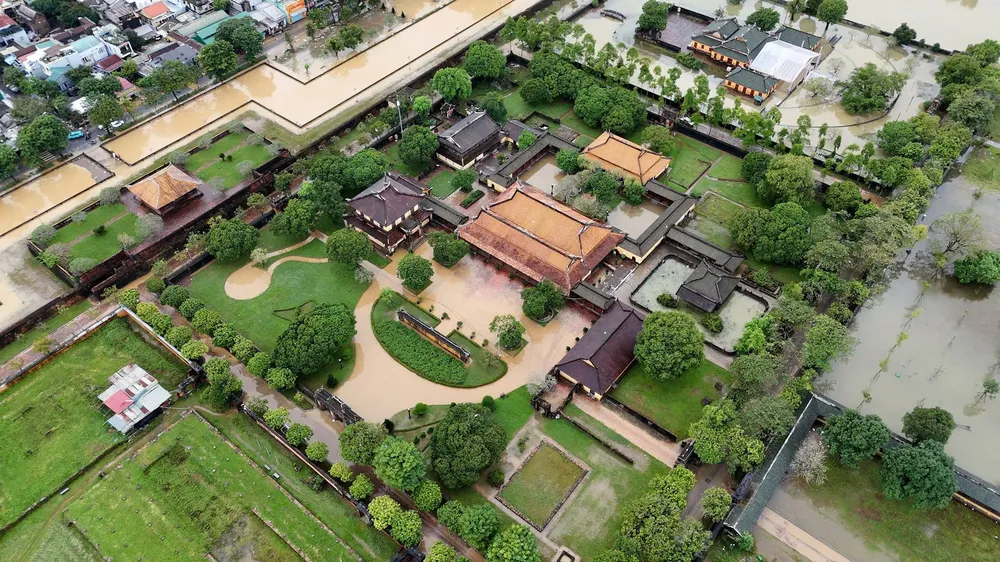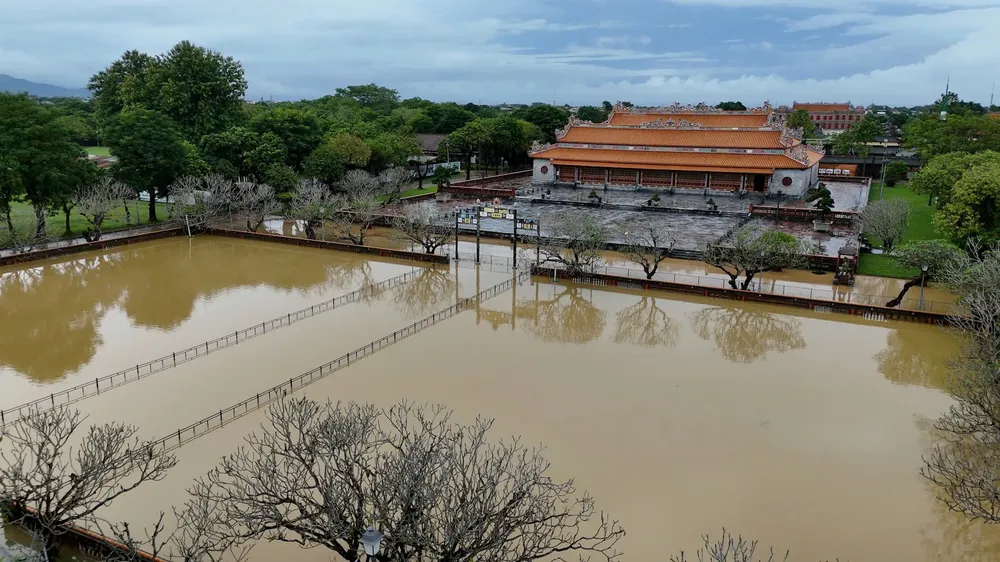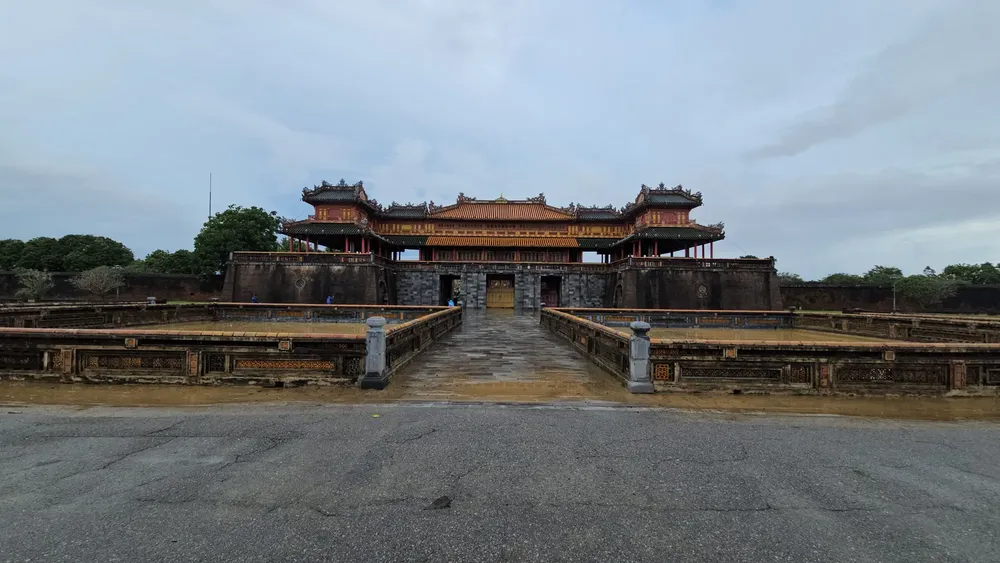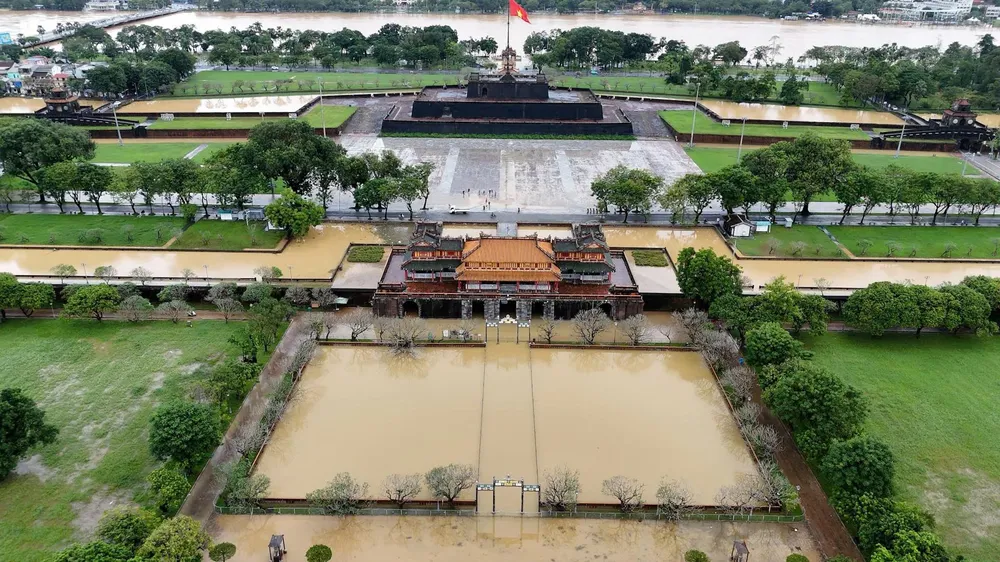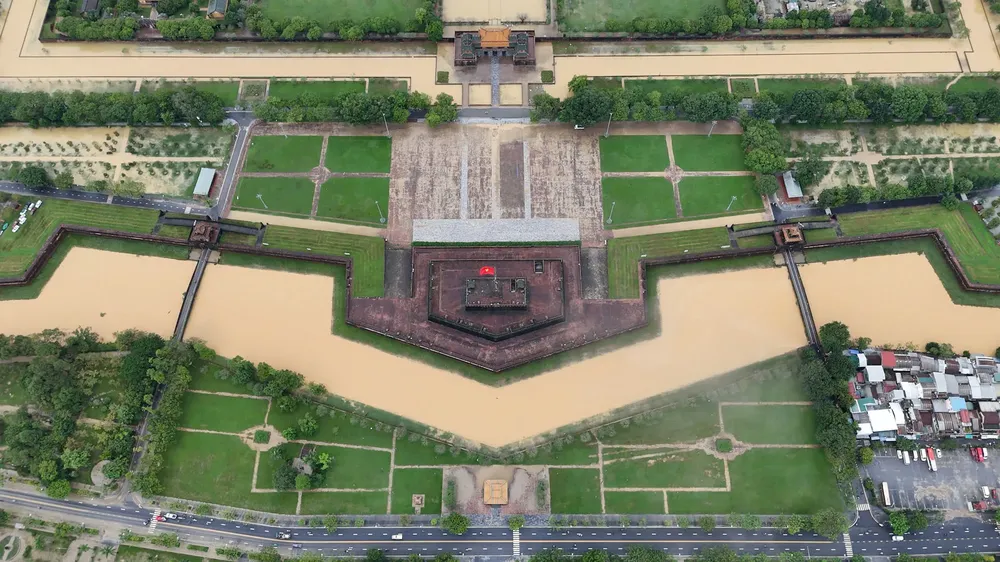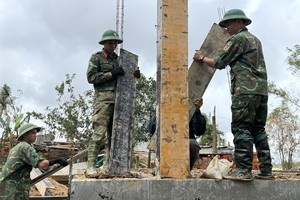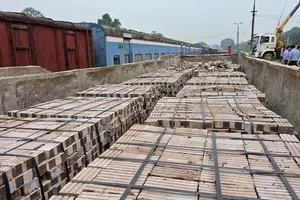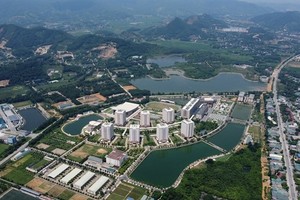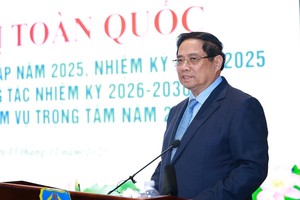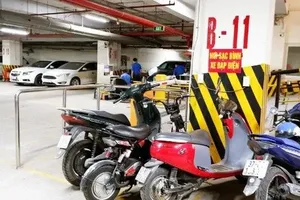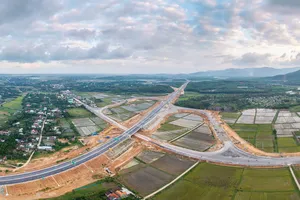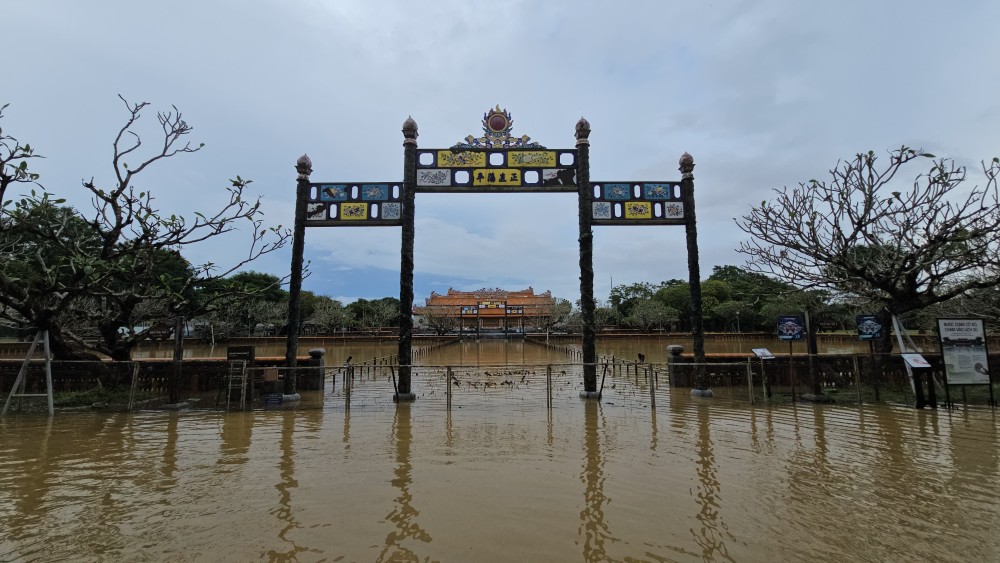
Floodwaters across Hue City began to recede on October 30. The train loaded with rocks that had been deployed to anchor Bach Ho Railway Bridge during the recent flood has now been moved from its position.
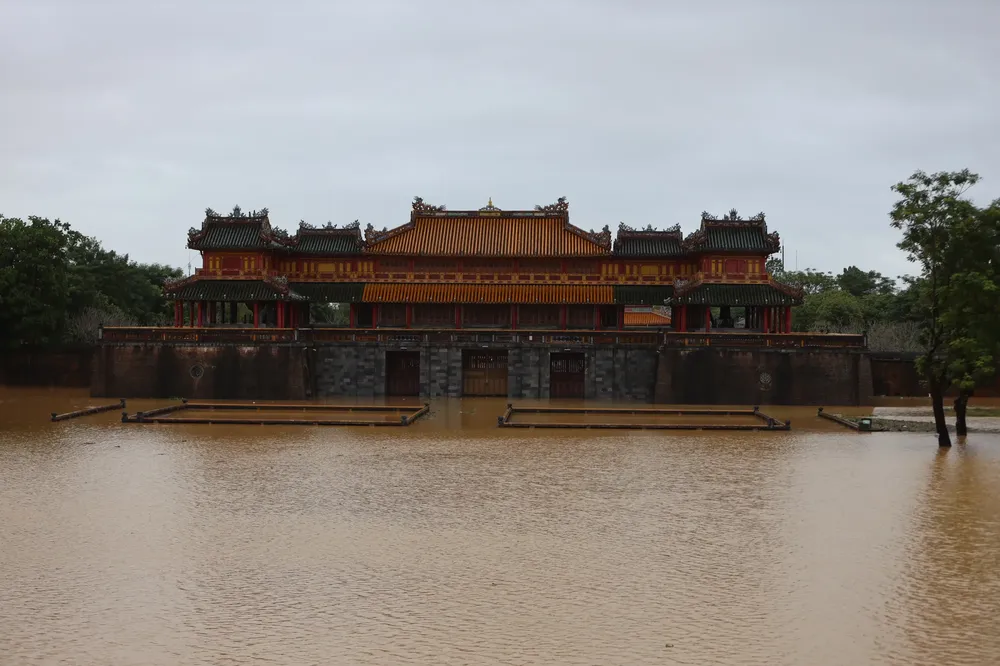
In downtown Hue, the receding water left behind thick layers of mud and debris. Residents promptly clean up, drain water and sanitize their homes in hopes of quickly returning to normal life.
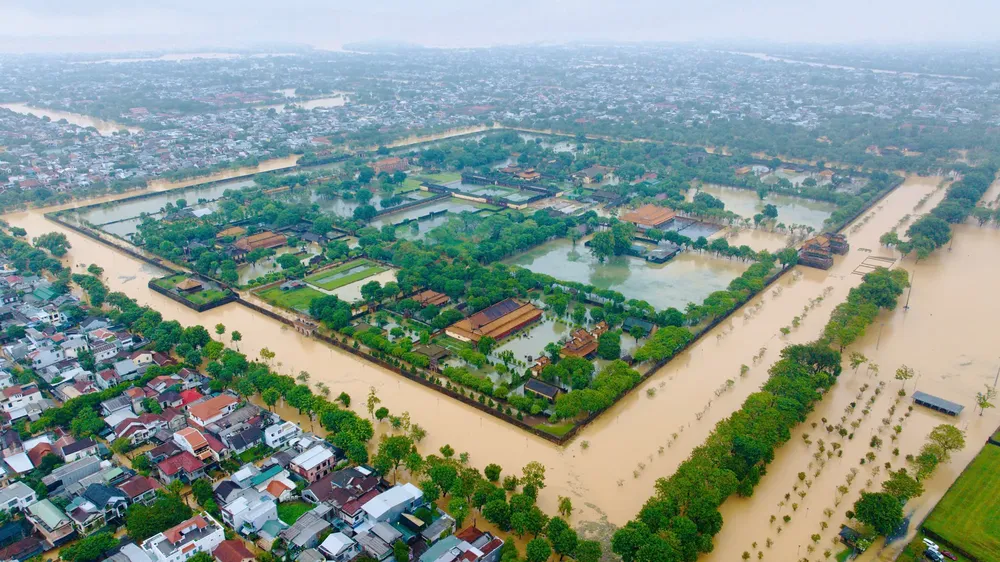
At the Hue Imperial Citadel, one of the most heavily flooded areas for nearly four days, floodwater has now mostly receded. Some sections remain waterlogged, particularly around the Thai To Mieu Temple Complex, which is currently the altars of the nine Nguyen Lords under restoration.
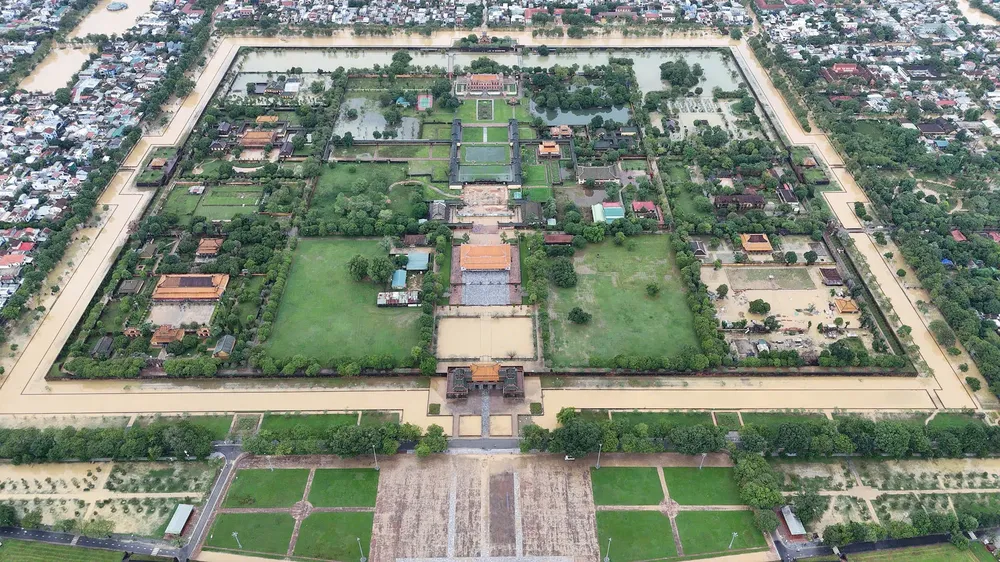
Mr. Phan Thien Dinh, Chairman of the Hue City People’s Committee, said that floodwaters inside the Imperial Citadel reached around one meter deep when the Huong River peaked at about 1.55 meters above the third warning level, while the palace buildings were submerged by about 0.3 meters.
The royal tombs of the Nguyen Emperors, including Gia Long, Minh Mang, Thieu Tri and Duc Duc, were flooded at depths ranging from one to 1.7 meters. The Tang Tho Pavilion saw water levels rise over one meter, and other heritage sites across Hue experienced localized flooding from 0.2 meters to 0.4 meters.
Despite severe flooding, the Hue Monuments Conservation Center had proactively implemented disaster-prevention measures in advance, helping protect the heritage complex from major damage. As of now, the UNESCO-listed site remains largely intact, standing firm against the forces of nature.
